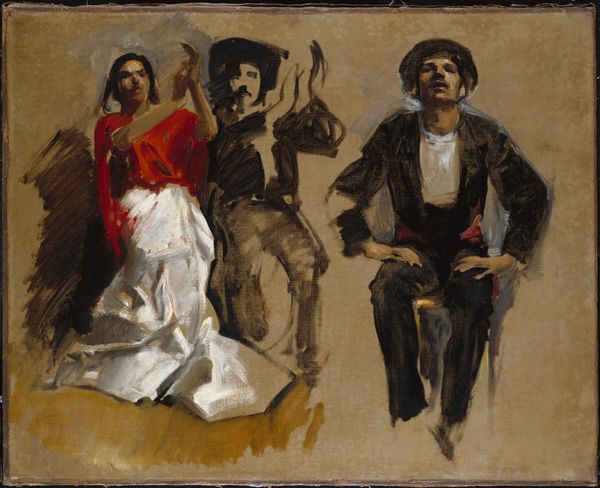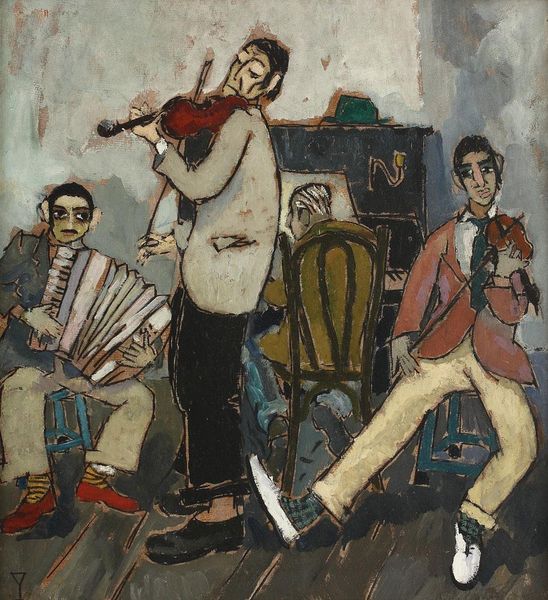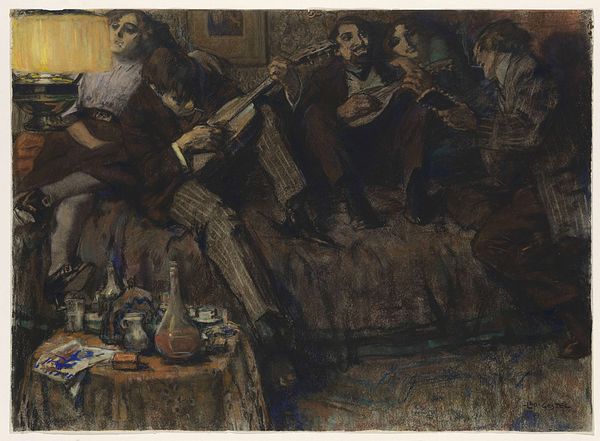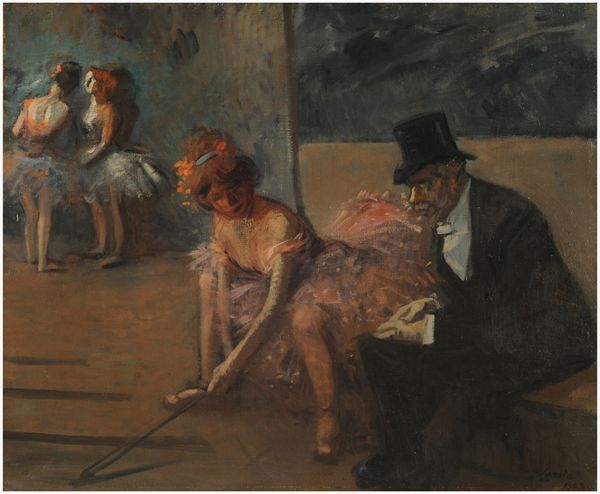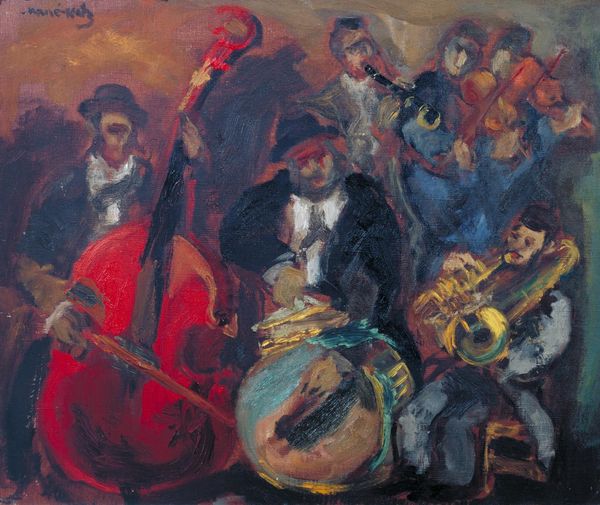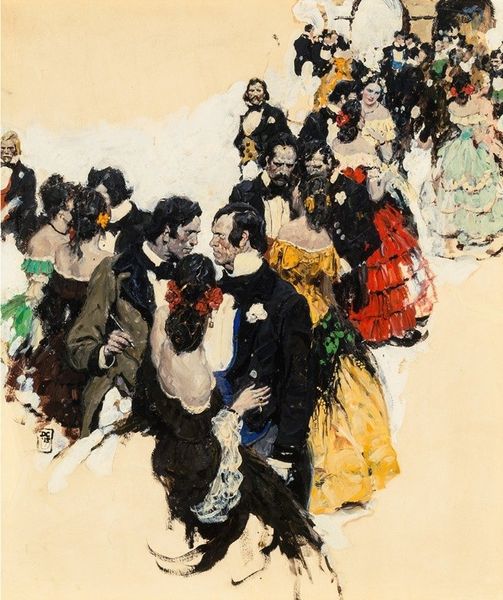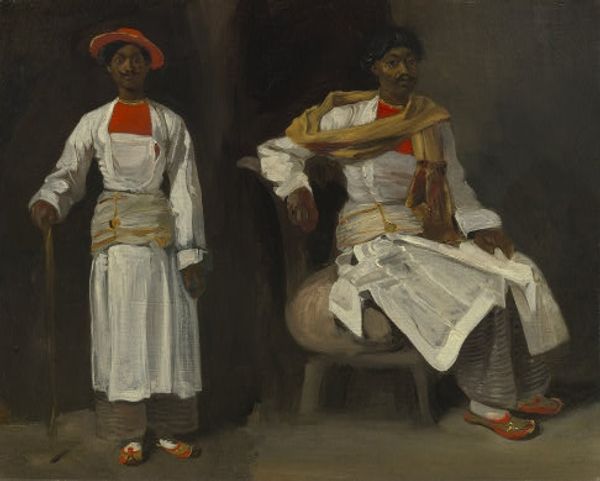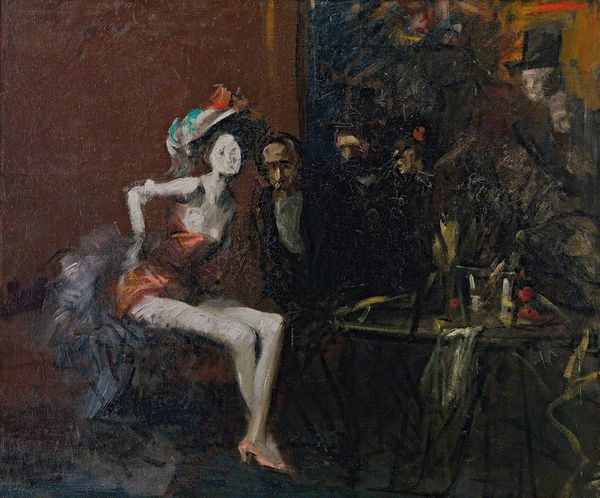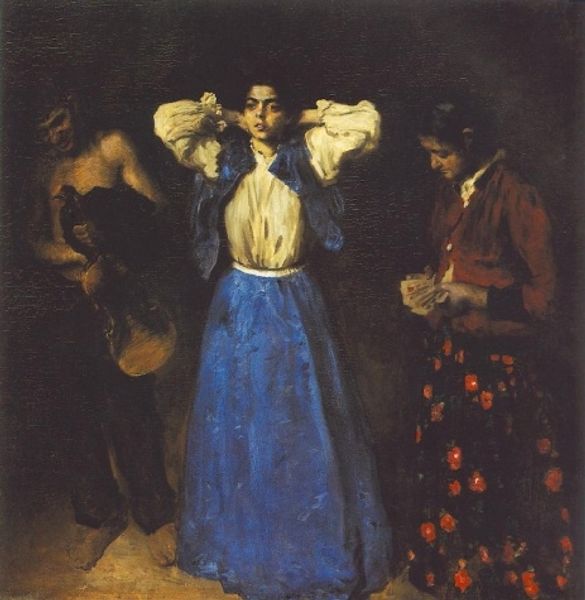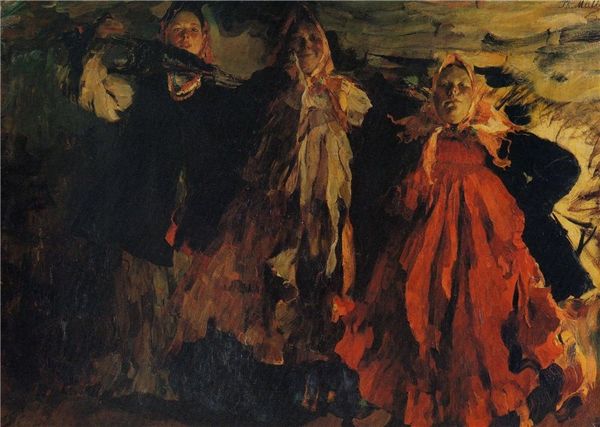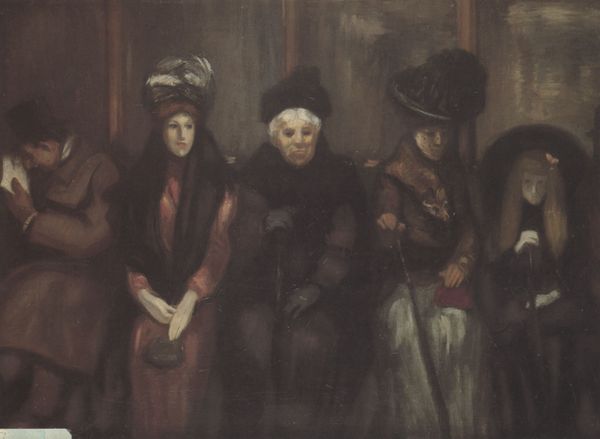
oil-paint, impasto
#
impressionism
#
oil-paint
#
charcoal drawing
#
oil painting
#
impasto
#
genre-painting
#
portrait art
#
watercolor
Copyright: Public Domain: Artvee
Curator: Standing before us is "Study for Seated Figures for ‘El Jale’," an oil on canvas painted circa 1882 by John Singer Sargent. Editor: My immediate impression is one of captured movement and contrast. The vibrant red and stark white against the muted background are arresting, giving off an aura of Spanish dynamism. Curator: Sargent created this preparatory sketch while planning for "El Jaleo," his ambitious, large-scale depiction of a Spanish flamenco performance, meant to impress the Parisian Salons. "El Jaleo" translates to “rowdiness.” This smaller oil study is significant, a record of Sargent grappling with figure placement and composition. Editor: Note how Sargent uses impasto—thickly applied paint—particularly in the dancer’s dress. This not only adds texture but also directs light across the canvas, animating the figures even more. The composition is strikingly unbalanced, further conveying tension. Curator: Indeed. Consider the historical context: Sargent was an expatriate artist, navigating cultural expectations. Paintings of Spanish Roma, particularly flamenco dancers, were quite popular, though fraught with orientalist undertones. How does this study speak to broader artistic trends of the time? Editor: Looking at the rapid brushstrokes, there's a tangible sense of energy but it could just as well represent the energy on location with the performers! His application reminds us this is, in its raw form, a working painting as much as it’s a view of an observed and captivating cultural performance. Curator: He seems most concerned with capturing essential gesture and light effects as a means of understanding movement and drama as he plans a future piece. The seated figures give us hints of Spanish dress while his main attention rests on the dancer herself. Editor: It would be interesting to compare it to "El Jaleo" itself, to study how Sargent took preliminary work into final execution in ways both deliberate and improvisational. Curator: This study unveils the development of Sargent's mature style and sheds light on a fascinating historical context. Editor: And a look at how a painter seeks to understand—through form and technique—something captivating observed.
Comments
No comments
Be the first to comment and join the conversation on the ultimate creative platform.
